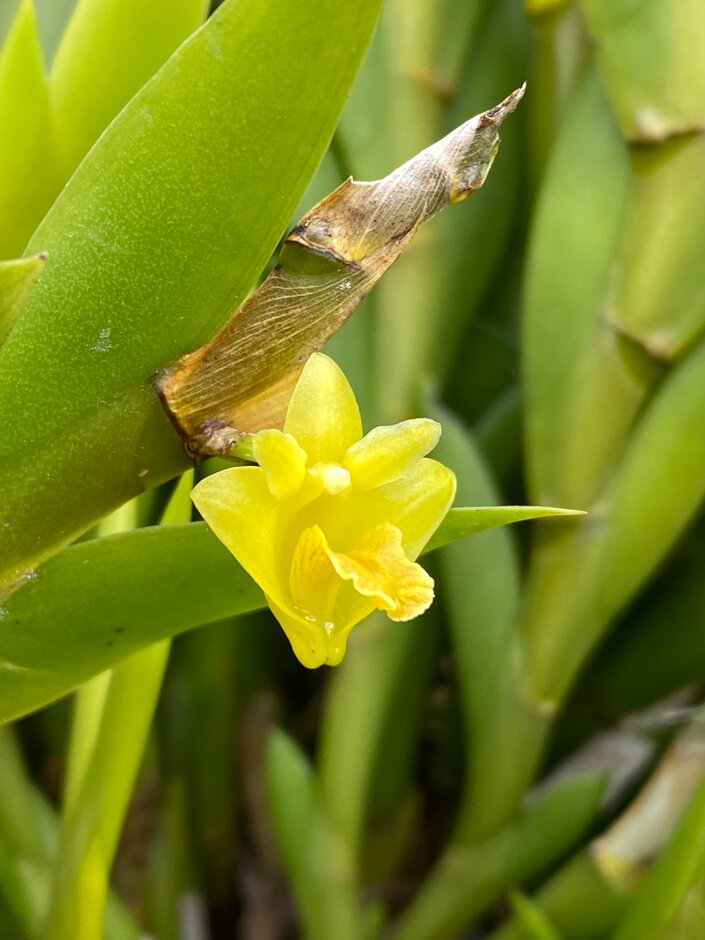Dendrobium keithii
An evergreen, epiphytic orchid with fleshy, green leaves overlapping the long, pendulous central stem. The leaves are flat, arranged alternately around the stem in one plane, creating a herringbone pattern. Each succulent leaf is 3-5cm long and lance-shaped. Flowers are insignificant, around 1cm and pale yellow; produced on short flowering stems along the central stem in autumn.

Size
Ultimate height
0.1–0.5 metresTime to ultimate height
5–10 yearsUltimate spread
0.1–0.5 metresGrowing conditions
Moisture
Well–drainedpH
NeutralColour & scent
| Stem | Flower | Foliage | Fruit | |
| Spring | Green | |||
|---|---|---|---|---|
| Summer | Green | |||
| Autumn | Yellow | Green | ||
| Winter | Green |
Position
- Full sun
- Partial shade
Aspect
East–facing or South–facing or West–facing
Exposure
Sheltered Hardiness
H1ABotanical details
- Family
- Orchidaceae
- Native to GB / Ireland
- No
- Foliage
- Evergreen
- Habit
- Pendulous weeping, Clump forming
- Genus
Dendrobium are epiphytic and terrestrial orchids with elongated, stem-like pseudobulbs bearing linear to ovate leaves. Racemes or panicles of showy flowers are produced from nodes along the stems mainly in spring
- Name status
Correct
- Plant range
- India (Andaman Islands, Assam), Thailand
How to grow
Cultivation
Plants are best grown mounted on cork bark or wood if sufficient humidity can be provided. Alternatively, grow in a pot in an epiphytic, medium grade, bark-based potting mix with added perlite, moss, or coir. As with many orchids, they grow best when the roots are slightly restricted. Therefore, avoid over-potting or frequent root disturbance. It is a warm-growing orchid and the temperatures should not drop below 16°C. It can be grown similarly to Moth Orchid (Phalaenopsis) but requires much brighter conditions. Provide indirect light and higher humidity by misting regularly in spring and summer, then move the plant to a bright, room in autumn and winter. Ensure that roots dry-out between the waterings, especially in winter. See indoor orchid cultivation
Propagation
Propagation by seed is only possible in a controlled laboratory environment. Mature plants may be divided when the plant overgrows the pot. Sideshoots (keiki) may develop on older canes -remove and pot them into sphagnum moss when the new roots are at least 2cm long.
Suggested planting locations and garden types
- Houseplants
- Conservatory and greenhouse
Pruning
No pruning required.
Pests
May be susceptible to scale insects, aphids, mealybugs and glasshouse red spider mite.
Diseases
Generally disease-free.
Get involved
The RHS is the UK’s gardening charity, helping people and plants to grow - nurturing a healthier, happier world, one person and one plant at a time.